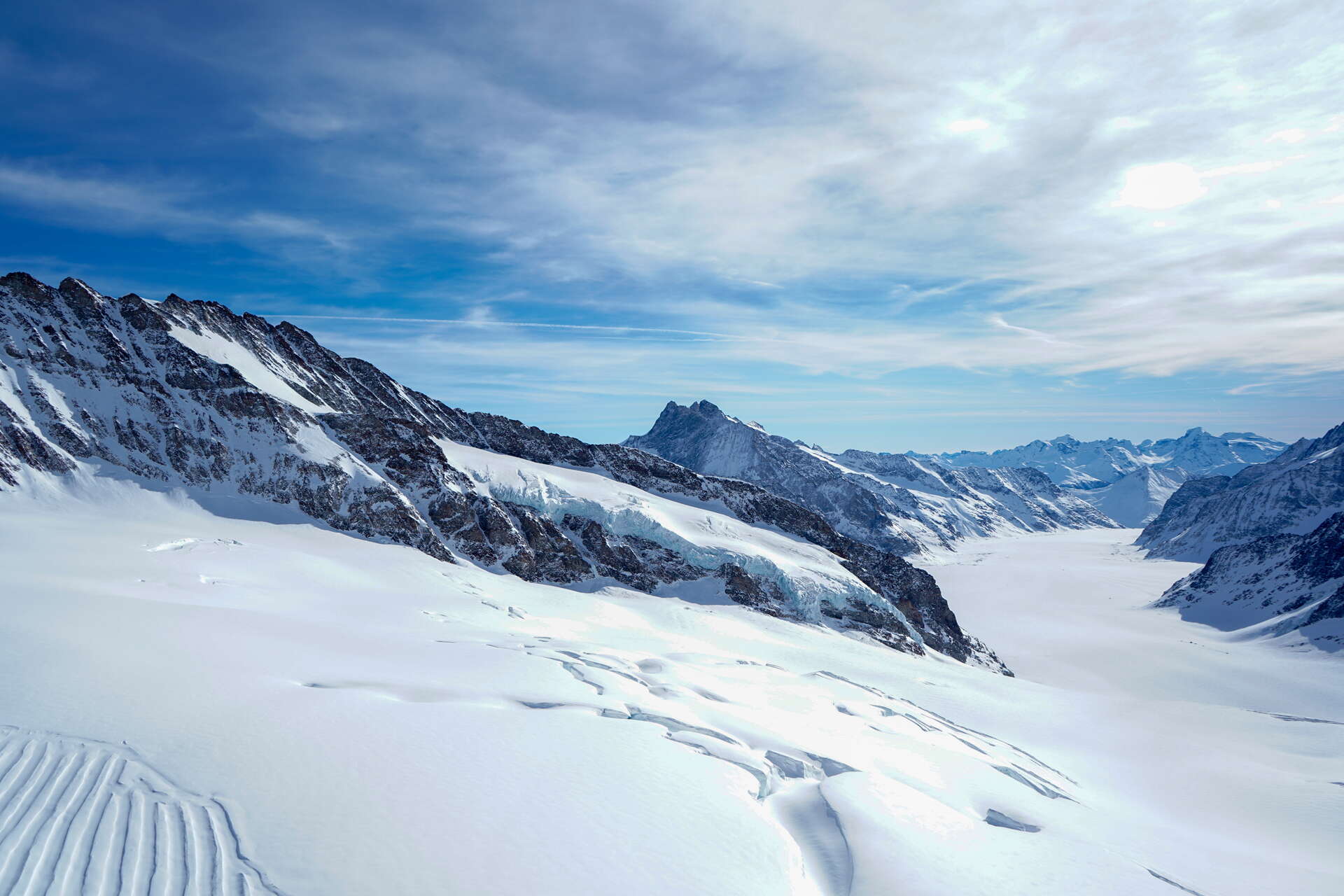Blogbuster
Glaciers of the Jungfrau Region
You will also come across water in its frozen form in the Jungfrau Region. Even the largest Alpine glacier, the Aletsch Glacier. It is one of 1463 glaciers in Switzerland. Still. More than 700 glaciers have melted away since the 1970s. A consequence of climate change. So it's high time to get up close and personal with the eternal ice. These five glaciers are definitely worth a visit.
#1 Great Aletsch Glacier
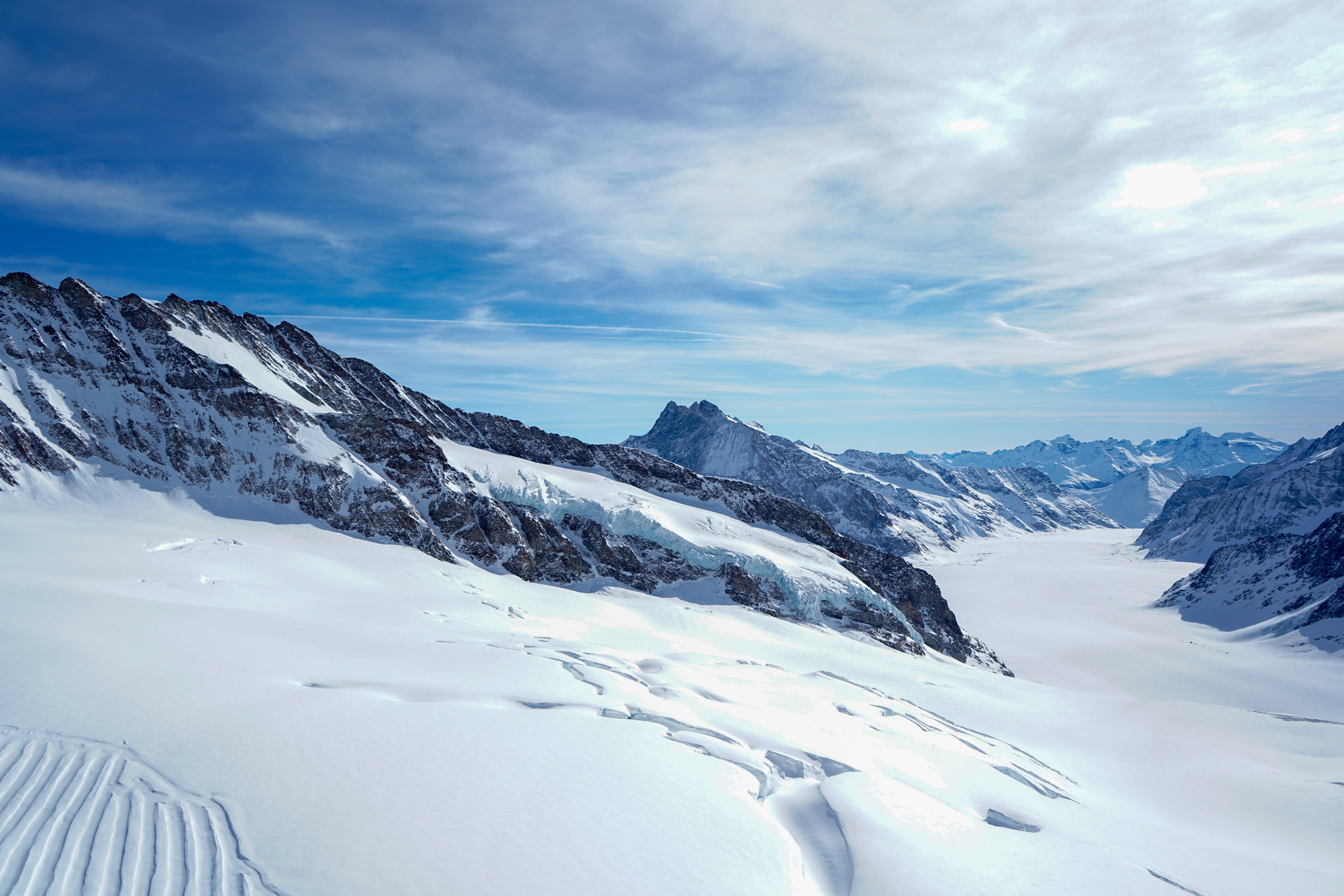
It is the largest alpine glacier. Over a length of 23 km, it covers an area of 80 square kilometres. At its deepest point, it is 900 metres thick. A total of 11 billion tonnes of ice lie here. If the ice giant were to melt, every person on earth could be supplied with one litre of water a day for 3.5 years. As things stand now, the Aletsch Glacier is shrinking by 50 metres per year due to global warming. The Great Aletsch Glacier is the centrepiece of the UNESCO World Heritage Site Jungfrau-Aletsch. You have a good view of the "eternal" ice from the Jungfraujoch.
#2 Lower Grindelwald Glacier
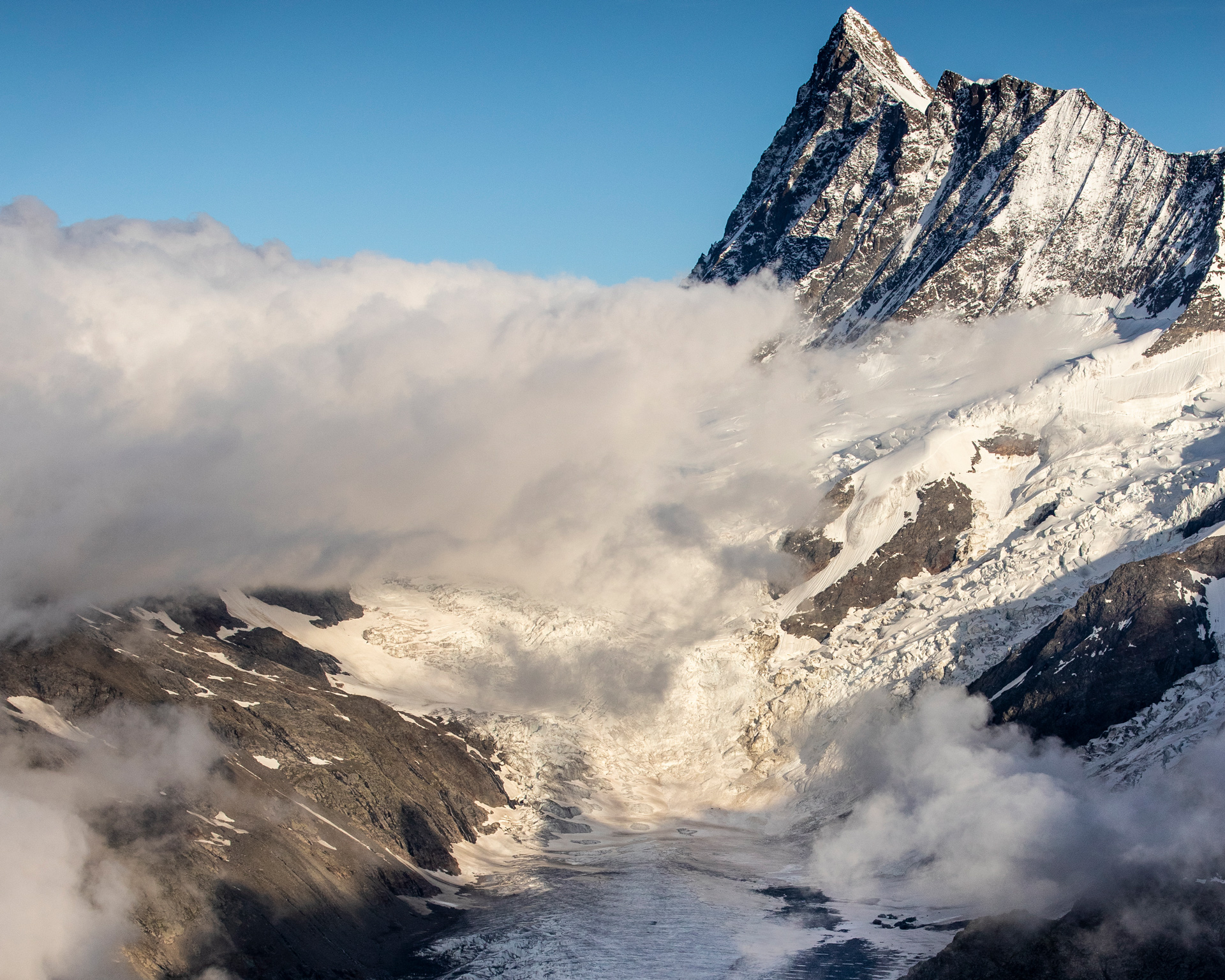
It was one of the largest Swiss glaciers. The White Lütschine River emerged from it. There is a reason why we are writing in the past. Due to glacier shrinkage, the Lower Grindelwald Glacier has receded so much since 1850 that the glacier tongue that originally gave it its name no longer exists today. Only its former tributaries, which have their own names, still exist.
#3 Upper Grindelwald Glacier
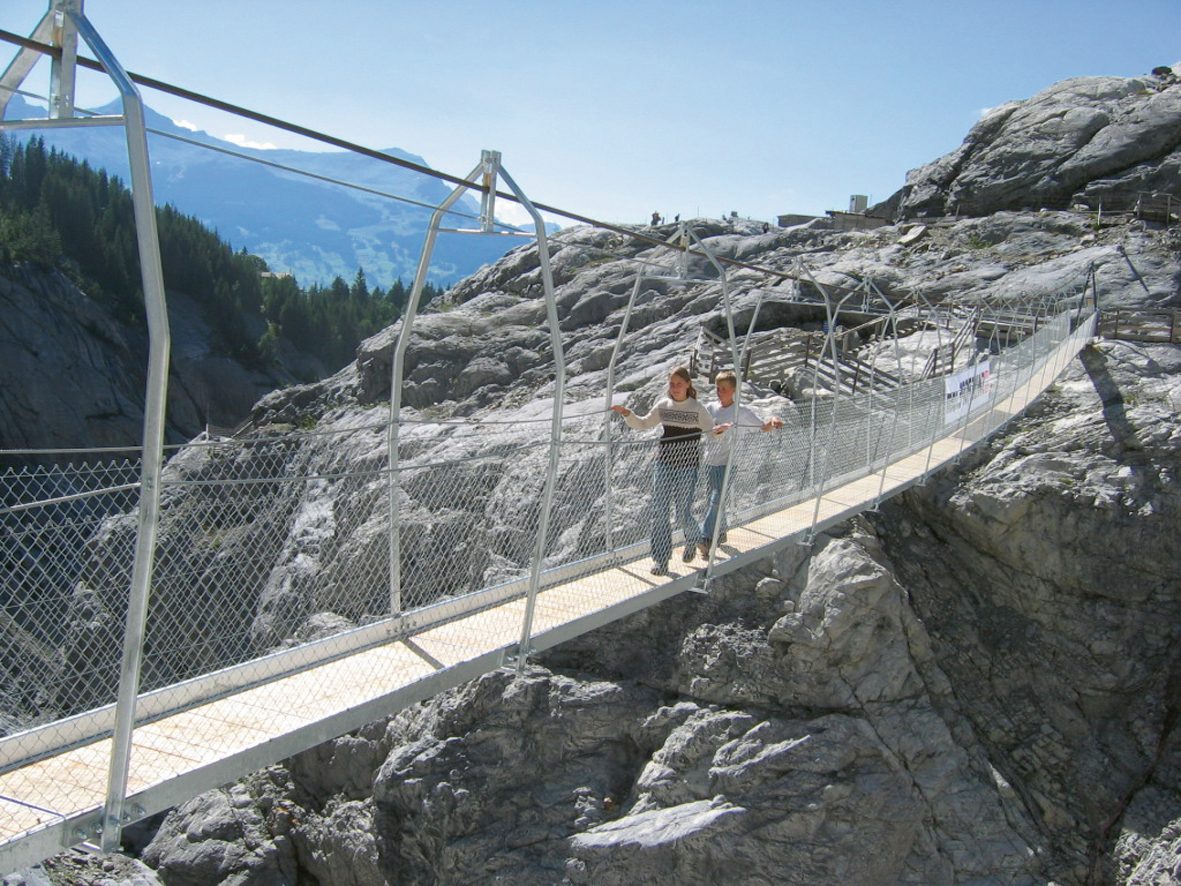
The special thing about the 6 km long glacier is that its tongue lies at just 1400 metres above sea level - making it one of the lowest perpetual ice fields in the Alps. If you take the bus from Grindelwald to the Gleckstein junction, you can hike along the Ischpfad trail along the deep gorge of the Upper Grindelwald Glacier to the Glecksteinhütte. An impressive mountain trail that requires surefootedness. Once you reach the top, you will be rewarded with a beautiful view of the glacier and more.
#4 Rosenlaui Glacier
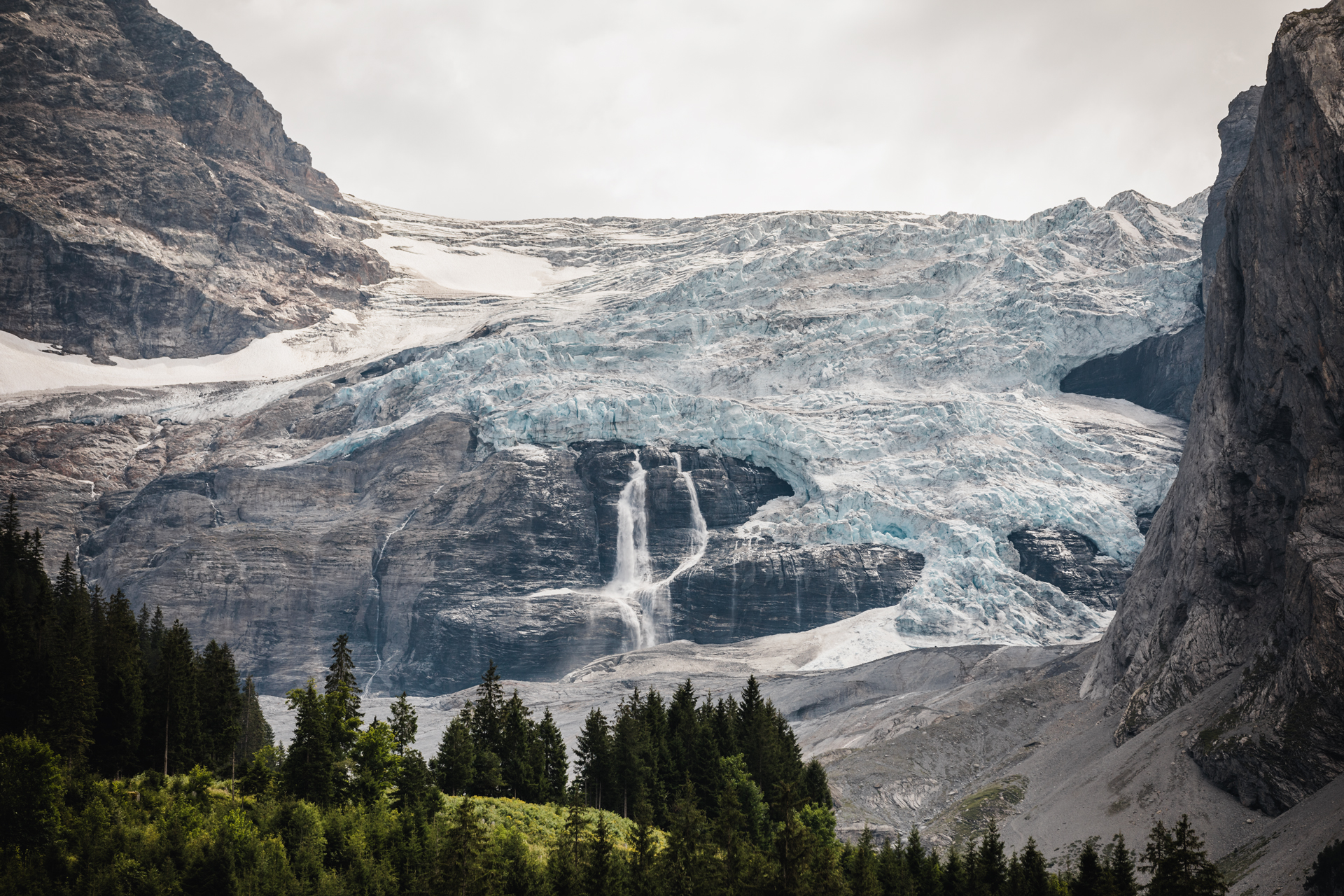
The glacier to the south of Meiringen is 4.5 km long, 1 km wide and is located between Wellhorn (3191 m above sea level), Kleiner Wellhorn (2700 m above sea level) and Dossen (3138 m above sea level). It can be reached on foot from Rosenlaui. The glacier tongue is currently at 2000 metres above sea level. This is the source of the Weissenbach, which falls steeply into the valley with waterfalls and flows into the Reichenbach after the Rosenlaui Glacier Gorge. This in turn carries the water over the famous Reichenbach Waterfall through the Reichenbachtal into the Aare.
#5 Gauli Glacier
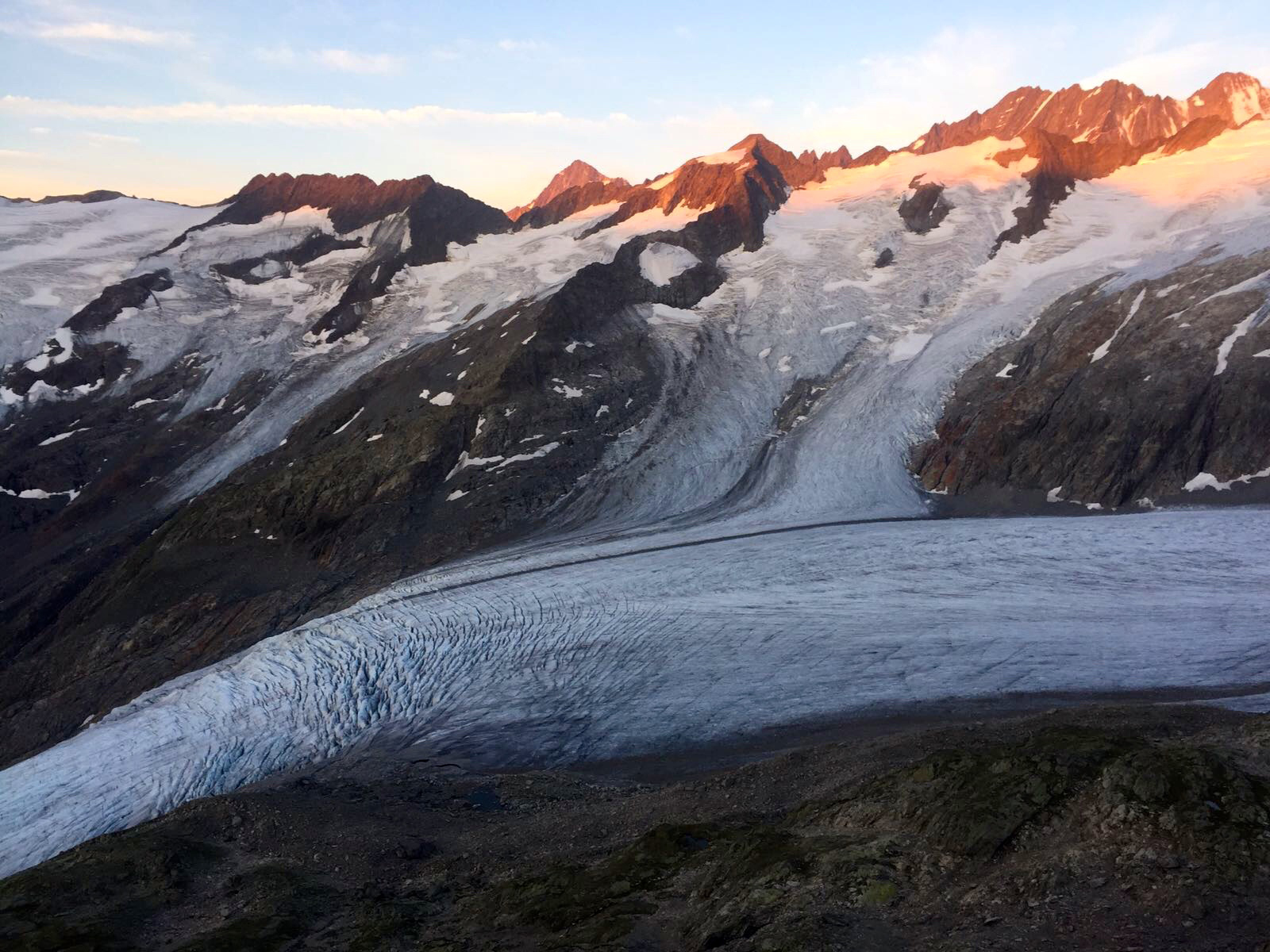
5 km long, 1 km wide, connected to the Upper Grindelwald Glacier to the west and the Rosenlaui Glacier to the north. This is the Gauli Glacier. A two-day tour takes you from Innertkirchen into the practically untouched rear Urbachtal valley - with an overnight stay in the Gauli hut. In 1946, the Gauli Glacier inadvertently hit the headlines when the American military plane Dakota crashed or stranded on the glacier. The rescue of the survivors caused an international sensation. It was the first alpine air rescue in the world.
#6 Aargletscher
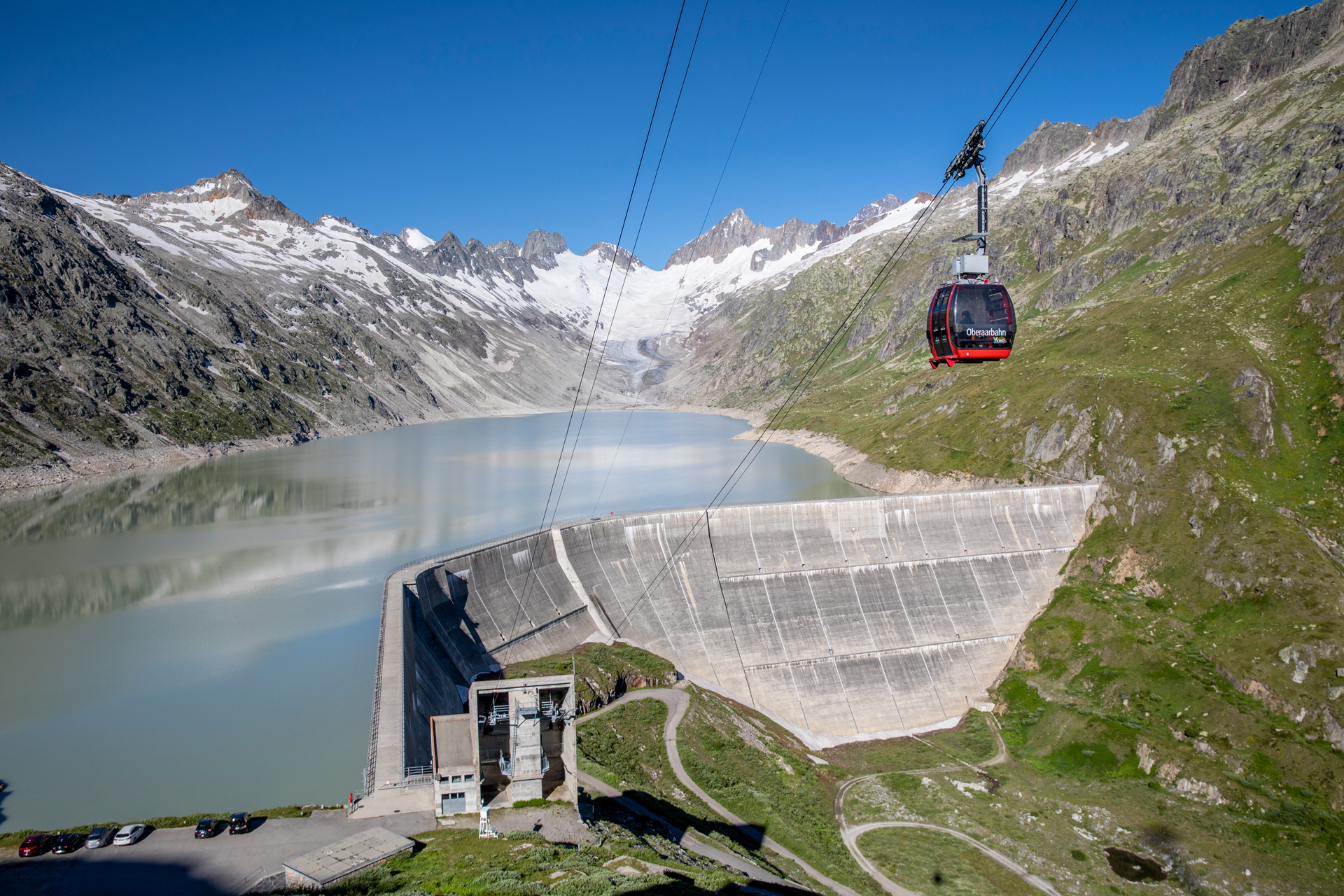
This group of glaciers includes the Oberaar Glacier, whose outflow is the Aare, which after a short course receives the outflow of the Unteraar Glacier. The latter is the result of the union of two higher ice streams that descend from the high valleys of the Schreckhorn and are separated by the rocky ridge of the Lauteraarhörner, namely the Lauteraar Glacier and the Finsteraar Glacier. With a length of 12 kilometres, the Unteraargletscher is the fifth-largest glacier in the Alps. Take the six-kilometre panoramic road or the self-propelled gondola from the Grimsel Hospiz to Berghaus Oberaar - and enjoy the view of the imposing glacier world on the way.


